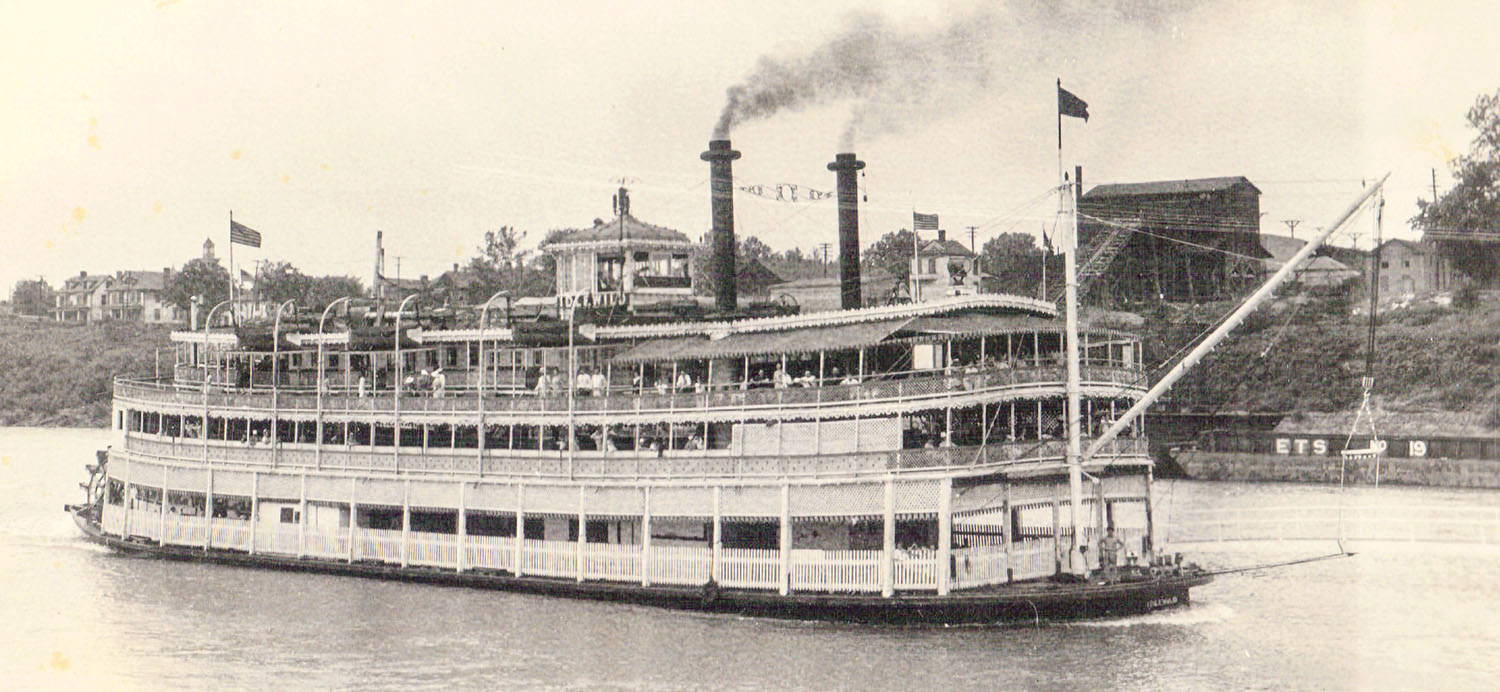When the steel hull of the steamer Idlewild slid into the Allegheny River at the James Rees yard on October 18, 1914, it is doubtful that anyone present had the slightest inkling that the new sternwheeler would still be operating over a century later.
Shortly after the launching, The Waterways Journal described the vessel as being 160 feet in length and 40 feet in width. Also mentioned was a beautifully finished “dancing room” with waxed hardwood flooring, and the main deck as being covered with solid asphalt 2.5 inches thick from bow to stern.
Built for the West Memphis Ferry Company, the boat departed Pittsburgh on its maiden trip on the morning of Saturday, January 9, 1915, with a single crew commanded by Capt. James H. Rees, with Capt. Stewart H. Conner, pilot, and C.F. Halstead presiding over the engineroom. Capt. Fred Way (1901–1992) told this writer that he witnessed the new riverboat passing down the Ohio and that the authoritative whistle sounded just the same to him in 1989.
Upon arrival at its new home port, the Idlewild immediately went to work as a day packet and ferry between Memphis and Arkansas. By no means comparable to the palatial packets of the past, the new steamboat was sturdy, comfortable, safe and reliable, making it a favorite of the region.
By the 1920s, as paved roads and truck lines increased, there was a dramatic decline in the need for packet boats. The Idlewild changed owners several times, becoming a tramping excursion boat and offering brief cruises at river towns along the Mississippi, Ohio, Missouri and Illinois rivers.
In 1930, the large sidewheel excursion steamer America, considered Louisville’s excursion boat, was destroyed by fire while laid up for the winter at Jeffersonville, Ind. It was arranged for the Idlewild to replace the America for the 1931 season, making daily runs to the Rose Island and Fontaine Ferry amusement parks. Records indicate that from 1934 through 1939 the boat carried nearly 700,000 passengers during morning, afternoon and evening cruises from the Louisville levee.
The steamboat made big news in July 1940 when, as the orchestra played “Cut Out the Lights And Call the Law,” the vessel was raided by the sheriff to confiscate and destroy seven gambling devices.
As far as is known, the only other problems the vessel encountered with the local authorities were minor, twice being cited for releasing excessive smoke.
During World War II, the Idlewild was fitted with two towing knees to handle contract work pushing barges. The riverboat continued running excursions and entertained many troops with USO groups. At night the decks and pilothouse were outlined with hundreds of white light bulbs, giving the boat a breathtaking appearance.
On April 18, 1947, the Idlewild was sold for $40,000 to a new owner at Peoria, Ill. Capt. James Phillips, the boat’s master for 19 years, retired to his St. Louis residence. Capt. Ben Winters, formerly with the Diamond Jo Line and Streckfus Steamers, assumed command of the boat, but his tenure was short-lived. When the 84-year-old riverman passed away in early 1948, his final request was that the Idlewild’s name be changed to Avalon in tribute to the first steamboat upon which he served.
The owners granted the captain’s deathbed wish, and the boat embarked on a new life that would last until 1961, taking the stalwart sternwheeler upon nearly every river with sufficient depth to float it. After a very close brush with the scrapyard, the boat was sold at auction for $34,000 to become today’s beloved Belle of Louisville, truly an incredible saga.




